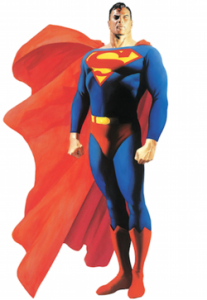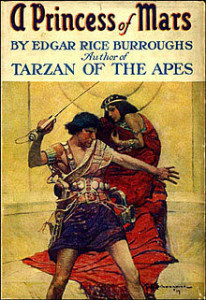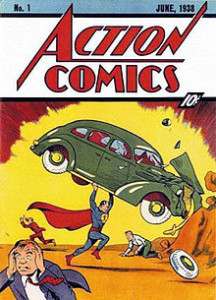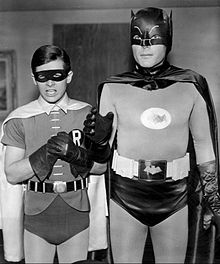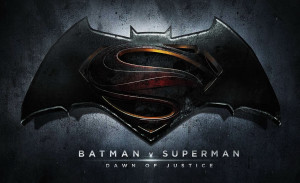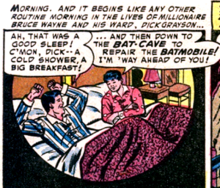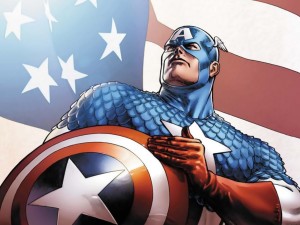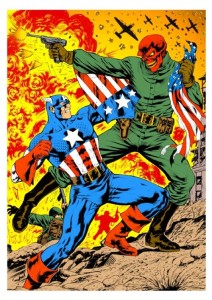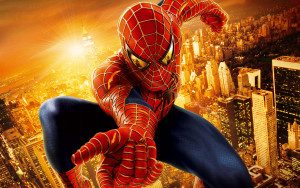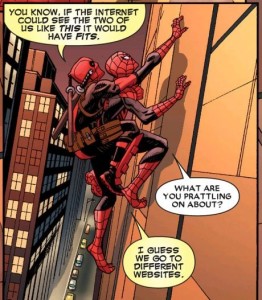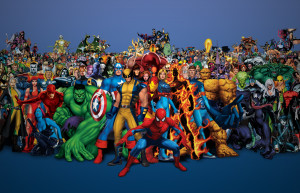For a final post, I want to include a personal favorite hero of mine: Captain Marvel.
/cdn0.vox-cdn.com/uploads/chorus_asset/file/2348912/Screen_Shot_2014-10-13_at_12.41.22_AM.0.png)
In a similar vein to the web singing Spider-man, Captain Marvel (or Carol Danvers) got her powers by being in the wrong place at the wrong time. A former air force piolet, Danvers was caught in the explosion from an alien device. The release of energy transformed Danvers genetic structure, making her an alien-human hybrid. The alien species in question, the Kree, are a highly advanced race known for wielding super human abilities. With her new powers, Danvers became Captain Marvel!
One of the reasons that Danvers has become so popular as of late is due to her unique characterization. She embodies several feminist values and ideals. Historians and critics alike often comment that comics mirror the culture of the time. As a female Character, Captain Marvel mirrors the roles and ideas of women in society at certain times. Still, Ms. Marvel wasn’t exactly breaking molds. Her powers fell into traditional superhero lore, and were similar to those initially borne by Superman. Ms. Marvel wasn’t so much presenting an alternative to the patriarchy as she was embodying its ideals
Initially, Danvers was just a love interest for the former (male) Captain Marvel. After gaining her powers, however she became symbol of women’s liberation. Although Danvers had no memory of her victories as Marvel (she would black out, the Marvel persona would emerge, then Danvers would come to unaware of what she had done) Danvers was still a career oriented women who fought for equal rights in the work place. In the first issue of Ms. Marvel, Danvers demands equal pay and speaks for women in journalism. The comics also touch on keeping a social/love life along with a career.
/cdn0.vox-cdn.com/uploads/chorus_asset/file/2415146/Screen_Shot_2014-11-02_at_12.27.23_AM.0.png)
Danvers has gone on a number of journeys, has lost her powers several times, and has lost her memories on more than one occasion. When she first entered comics, Danvers was called “Ms. Marvel.” She was the first hero to use “Ms.” In her name, in a way representing the feminist movement of the time who advocated to using the acronym. This is interesting, given that at one point She is sent to another dimension and raped by a villain. This particular storyline has been widely criticized, specifically by comic historian Carol Strickland in the essay “The Rape of Ms. Marvel.” In the essay, Strickland states “The artwork goes to great lengths — two close-up panels — to show Ms. Marvel’s ecstasy during the pseudo-mating,” Strickland wrote. “Another lesson to be learned from comics. It’s okay to rape. Women enjoy rape.”
/cdn0.vox-cdn.com/uploads/chorus_asset/file/2415378/Screen_Shot_2014-11-02_at_8.10.42_AM.0.png)
Not only that, but Marvel’s fellow Avengers were not upset by the fact that their friend was kidnapped and raped. They were happy for her. Critics point out that this is a symptom of a patriarchal ruled comic industry.
/cdn0.vox-cdn.com/uploads/chorus_asset/file/2415476/Screen_Shot_2014-11-02_at_9.13.44_AM.0.png)
The creator of Ms. Marvel, Chris Claremont took back to writing the character after the above mentioned rape happened. Returning to the roots of the character, he made her a strong force to be reckoned with rather than an object. In order to rectify the aforementioned events, Claremont created a scene where Danvers approaches the Avengers and rips into them for not being there for her and sending her off into another dimension with her rapist:
/cdn0.vox-cdn.com/uploads/chorus_asset/file/2416428/mmarvelrape3.0.jpg)
Today, Carol Danvers is just as she was before: a strong independent character who takes adversity and challenges head on. No longer objectified by her writers, Danvers has become a fan favorite even having a upcoming Marvel movie that will tie into Disney’s MCU.




_001.jpg)




